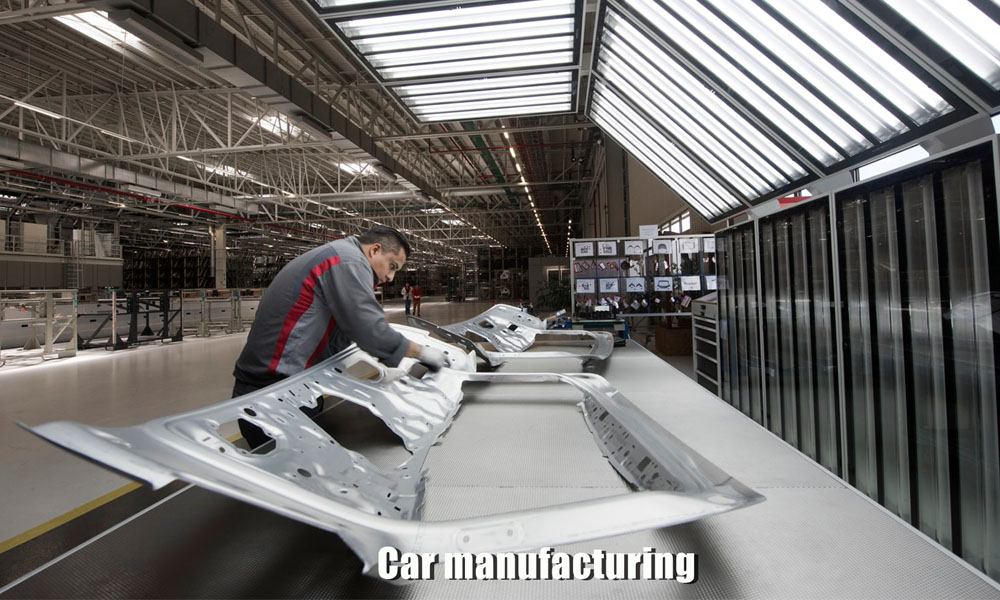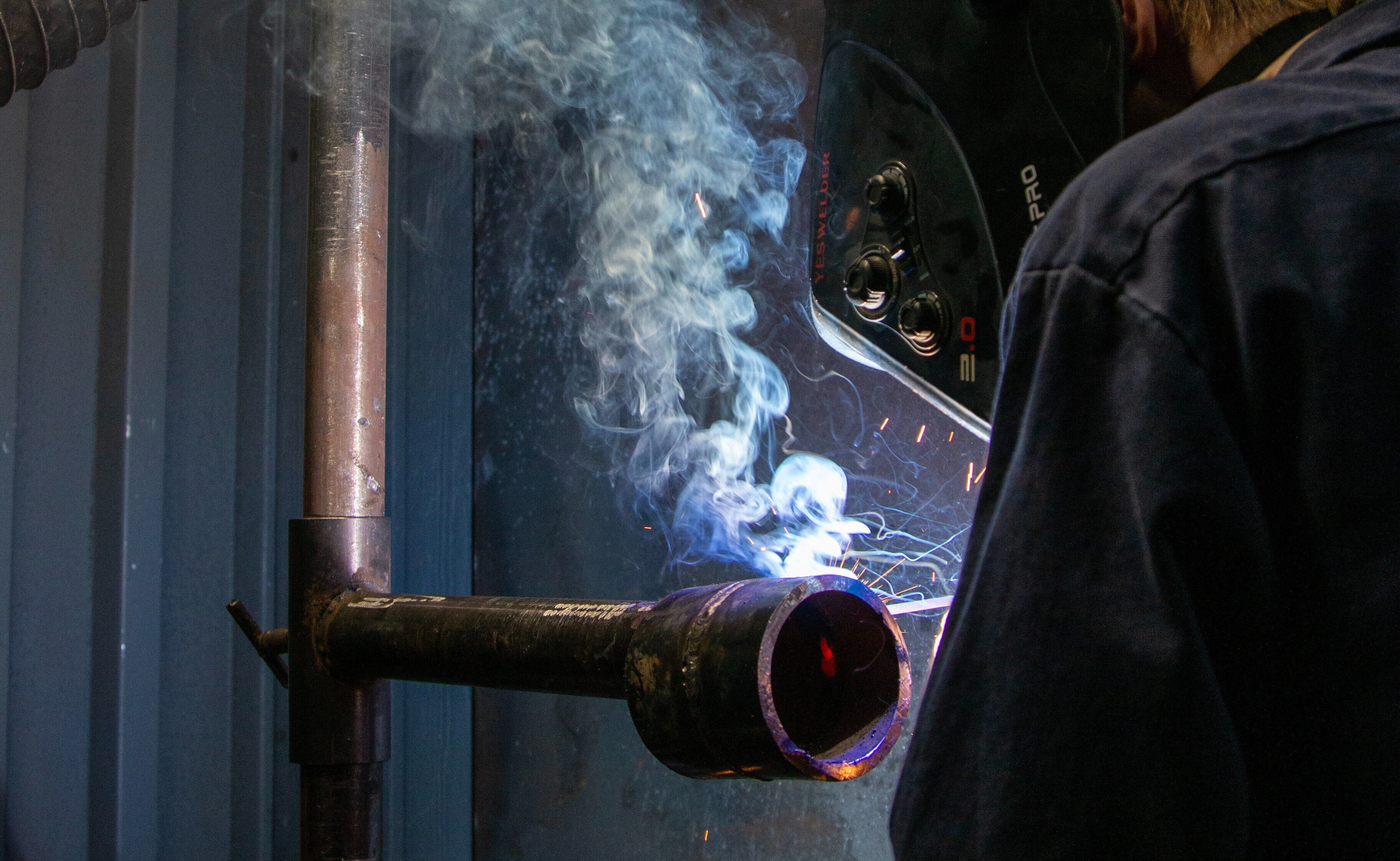Everything about Welding: Secret Insights Into Techniques and Ideal Practices for Success
Welding includes a selection of methods, each fit for details products and applications. Comprehending these techniques, such as GMAW, SMAW, and TIG, is important for attaining optimal results. Moreover, the best devices and security techniques can not be forgotten. As prep work and repairing play vital functions in the welding process, understanding these elements can substantially improve the quality of the end product. What are the crucial variables that guarantee a successful weld?
Understanding Various Welding Techniques
Welding methods include a selection of techniques, each matched to specific applications and materials. Amongst one of the most common methods are Gas Metal Arc Welding (GMAW), Protected Metal Arc Welding (SMAW), and Tungsten Inert Gas Welding (TIG) GMAW, also referred to as MIG welding, is popular for its rate and convenience, making it optimal for slim products. SMAW, or stick welding, is favored for its simplicity and efficiency in outside environments, particularly with thicker steels. TIG welding uses accuracy and control, making it ideal for intricate job and non-ferrous steels (Belgrade Fabrication). Each strategy has its special benefits and considerations, allowing welders to select the most effective approach based on the job's needs, material type, and preferred end results. Comprehending these strategies is crucial for effective welding
Crucial Welding Tools and Tools
While numerous welding strategies require details skills, the best equipment and devices are just as essential for attaining high quality outcomes. Crucial welding equipment consists of welding machines, which vary depending on the method-- such as MIG, TIG, or stick welding. Protective gear, including aprons, gloves, and safety helmets, assurances safety and convenience during the process. On top of that, fixtures and clamps assist safeguard products in area, guaranteeing precision in welds. Consumables like welding rods, cable, and shielding gas are likewise vital components that affect the quality of the weld. Tools such as mills and cutters facilitate surface area prep work and post-weld ending up, adding to an expert result. Buying top quality tools inevitably boosts the effectiveness and efficiency of welding jobs.
Safety And Security Practices in Welding
Appropriate safety practices are essential in the welding sector to secure employees from prospective dangers. Welders should wear proper individual protective tools (PPE), including headgears with appropriate shading, handwear covers, and flame-resistant garments. Sufficient air flow is crucial to reduce direct exposure to damaging fumes and gases generated during the welding process. Furthermore, workers ought to be learnt the right handling of welding devices to stop accidents. Fire precaution, such as keeping combustible materials away from the welding area and having fire extinguishers conveniently available, are essential. Regular inspections of equipment and offices can help determine possible hazards before they lead to accidents. By adhering to these security practices, welders can create a much safer working setting and lessen risks related to their profession.
Readying Products for Welding
Preparing products for welding is an essential action that substantially influences the quality and stability of the end product (Belgrade Fabrication). Correct prep work entails cleansing the surface areas to get rid of impurities such as dust, corrosion, and oil, which can endanger the weld. Strategies such as grinding, sanding, or utilizing solvents are frequently employed to achieve a tidy surface area. Furthermore, making sure that the materials fit with each other comfortably is essential; voids can lead to weak welds. It's additionally vital to consider the positioning and positioning of the parts, as this will affect the convenience of welding and the final outcome. Choosing the appropriate filler product and guaranteeing compatibility with the base metals is crucial for accomplishing solid, durable welds.
Tips for Getting High-Quality Welds
Achieving high-quality welds requires interest to information and adherence to best practices throughout the welding process. Correct joint prep work is crucial, making sure surface areas are cost-free and tidy from contaminants. Picking the suitable filler product and welding technique based upon the base steels is critical for suitable bonding. Keeping constant travel speed and angle while welding can advertise and prevent issues harmony. In addition, managing warm input is crucial; excessive heat can result in warping and damaged joints. If essential, on a regular basis examining the welds during the procedure enables for prompt changes. Using suitable post-weld therapies, such as cleaning and anxiety alleviation, can enhance the longevity and stability of the weld, eventually guaranteeing an effective result.
Troubleshooting Common Welding Issues
Welding frequently provides difficulties that can affect the top quality and integrity of the final product. Typical issues such as porosity, irregular weld beads, and getting too hot can develop, each requiring specific fixing strategies. Understanding visit their website these troubles is vital for welders steel welding to improve their abilities and accomplish excellent results.
Porosity Problems Discussed
Porosity can typically be neglected, it stays an important issue in welding that can endanger the integrity of a completed product. Porosity describes the presence of small gas pockets within the weld grain, which can weaken the joint and lead to early failure. This problem typically arises from pollutants, dampness, or improper securing gas coverage throughout the welding procedure. To mitigate porosity, welders must confirm that the base materials are dry and tidy, make use of appropriate protecting gases, and preserve constant welding specifications. Frequently evaluating the equipment and environment can additionally help identify prospective issues before they show up in the weld. Attending to porosity effectively is important for accomplishing strong, sturdy welds that meet quality requirements.

Irregular Weld Beans
Irregular weld beads can greatly influence the high quality and strength of a completed item. Various aspects add to this issue, including inappropriate travel speed, wrong amperage settings, and irregular electrode angles. When the welder relocates as well quickly, a bead might appear narrow and lack infiltration, while relocating too slowly can create too much build-up. Additionally, making use of the wrong amperage can lead to either undercutting or extreme spatter, both of which concession weld integrity. The welder's technique, such as inconsistent torch activity, can likewise lead to uneven bead appearance. To minimize these problems, welders need to focus on keeping stable, regulated activities and making certain correct equipment setups to attain harmony in their welds. Uniformity is key to accomplishing solid and reputable welds.
Overheating and Warping Issues
Excessive heat during the welding procedure can lead to substantial overheating and deforming problems, affecting the structural honesty of the work surface. These problems typically materialize as distortion, which can endanger placement and fit-up, making more setting up challenging. Factors adding to overheating consist of the option of welding parameters, such as Home Page voltage and take a trip rate, in addition to the sort of product being bonded. To minimize these problems, welders should keep constant travel rate and appropriate heat input while keeping an eye on the work surface temperature level. In addition, pre-heating or post-weld warm treatment can assist reduce anxieties brought on by quick air conditioning - Fabrication. Regular inspection and adherence to ideal methods are essential in stopping getting too hot and guaranteeing the durability and reliability of bonded structures
Often Asked Inquiries
What Are the Career Opportunities in the Welding Industry?
The welding industry offers varied occupation chances, consisting of positions as welders, educators, designers, and inspectors. Experts can work in production, building and construction, aerospace, and vehicle sectors, profiting from solid need and competitive incomes in numerous duties.
Exactly How Can I Improve My Welding Speed Without Giving Up High Quality?
To boost welding rate without sacrificing top quality, one need to practice effective techniques, maintain equipment, enhance settings, and improve hand-eye coordination. Regular training and seeking comments can likewise significantly contribute to attaining much faster, top notch welds.
What Qualifications Are Available for Welders?
Various accreditations exist for welders, including those from the American Welding Culture (AWS), the National Facility for Building And Construction Education And Learning and Research Study (NCCER), and different industry-specific companies. These credentials improve employability and show skill effectiveness.
Exactly How Does Welding Influence the Qualities of Metals?
Welding influences the residential or commercial properties of steels by modifying their microstructure, which can result in changes in firmness, ductility, and strength. Warm input and cooling prices throughout the procedure considerably influence these material characteristics.
Can I Weld Dissimilar Metals With Each Other?
